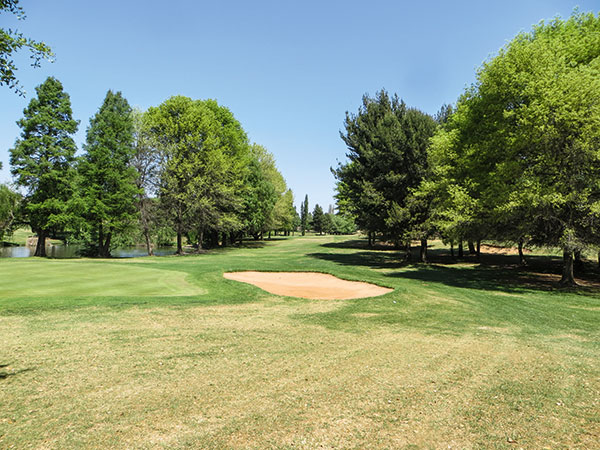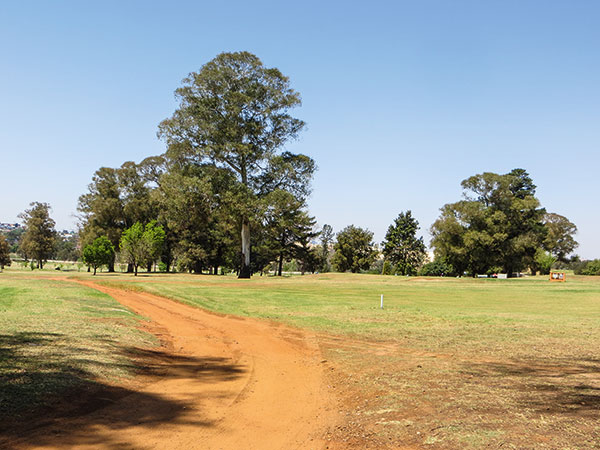An invasive alien species (IAS) is defined as plants, animals and microbes that are introduced into countries (unwittingly or on purpose), that then out-compete the indigenous species. The damage done by these alien species costs our economy billions of rands annually, and they pose the biggest threat to our biological diversity.
Although many South African golf clubs have generally embraced the idea of becoming more environ-mentally conscious, and have done excellent work in reducing their use of water and improving applications of potentially harmful herbicides, pesticides and fertiliser, many still lag behind in the battle against invasive plants.
An estimated 9 000 plants have been introduced to South Africa, and of these, 198 are classified as being invasive. As much as 10 percent of the land is covered by these alien species, and alarmingly, the problem is increasing at an exponential rate.
Where these problem species have been allowed to flourish, the natural ecological functions have been severely compromised, and the productive use of the land has been negatively affected. The effects of fire and flooding have been intensified, and soil erosion has increased, but in the case of golf courses where many alien trees and other unwanted plants have been allowed to grow, it is the threat to the water supply that should be of the most concern.
It must be said that the Working for Water programme launched in 1995 has resulted in excellent work being done.
Previously administered by the Department of Water Affairs and Forestry but now the Department of Environmental Affairs, this initiative has involved local communities working with other national and provincial government departments, various research foundations and private companies.
Since its inception, more than one million hectares of invasive alien plants have been cleared, providing jobs and training to some 20 000 people (52 percent of them women). Working for Water currently runs more than 300 projects in all nine provinces, and control methods include:
Mechanical – felling, removing or burning IAPs.
Chemical – using environ-mentally safe herbicides.
Biological control – using species-specific insects and diseases from the alien plant’s country of origin (to date 76 bio control agents have been released against 40 species).
Integrated control – a combination of these methods.
Most of the new estate golf courses that have been established since the 1980s have set excellent examples of eliminating alien species that existed on the property prior to the courses being constructed, and the developers of these facilities have taken care to plant only indigenous tree species.
Unfortunately, in some cases alien species have again taken root. Also, in certain instances, although the golf course maintenance team has ensured that the course remains free of the invaders, residents on these estates have planted thirsty trees and shrubs – which rather defeats the exercise.
But it is on the older courses where aliens were originally planted and have been allowed to stay, and millions of litres of water is extracted from the ground by these trees. Eucalypts (blue gums), syringa, wattles, Port Jackson, poplar and many other species can be found on golf courses all over the country, and greens committees resist removing these trees mainly because they influence the way holes are played, and they affect the shot values of the layout. Although valid, this is a rather weak argument.
The ubiquitous blue gums that populate many of our golf courses will ultimately have to be removed – they are far too thirsty, have invasive root systems and do nothing for our biodiversity.
We can understand that when many of these golf courses were constructed, little thought was given to the long-term effects of planting alien species, and indeed the full impact of these ‘imported’ species was not fully appreciated. They were chosen because they were fast-growing, and in some cases (on the highveld) their ability to withstand frost.
In some cases thirsty species were planted to dry out swampy areas, and natural wetlands, a critical feature of the environment, were destroyed.
Even after science proved that these aliens were highly undesireable, many golf clubs have doggedly defended their existence, and as each committee is replaced by the next, it has been all too convenient to avoid controversy and simply ignore the problem.
The cost of removal was given as a reason for inaction, along with the excuse that it was far better to plant alien vegetation because indigenous trees take too long to grow.
This is simply not true, and while certain species are slower-growing than others, there is a wide selection of trees perfectly suited to the local environment that will mature faster than aliens.
We applaud the efforts that are being made by many clubs to remove vegetation that doesn’t belong, replacing this with zero-maintenance, drought-tolerant species, which also improves the aesthetics of their courses. At the same time, we would urge others to follow this example.









